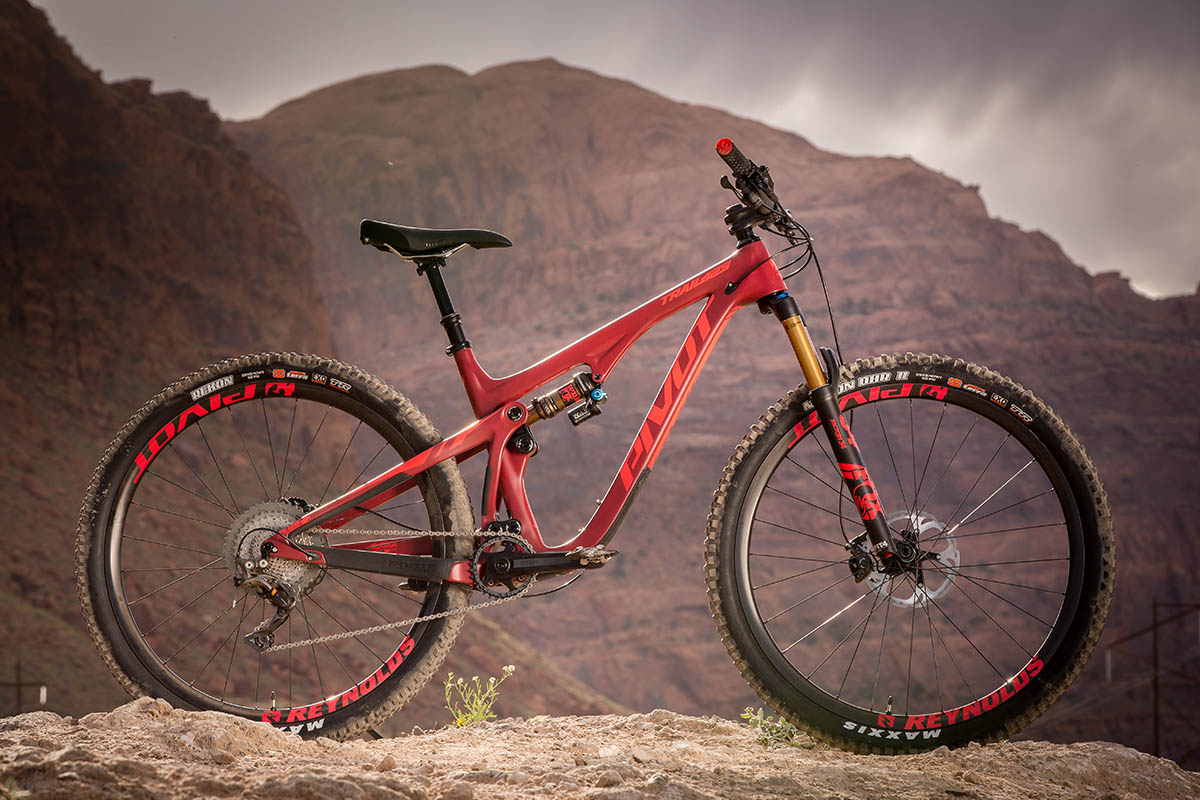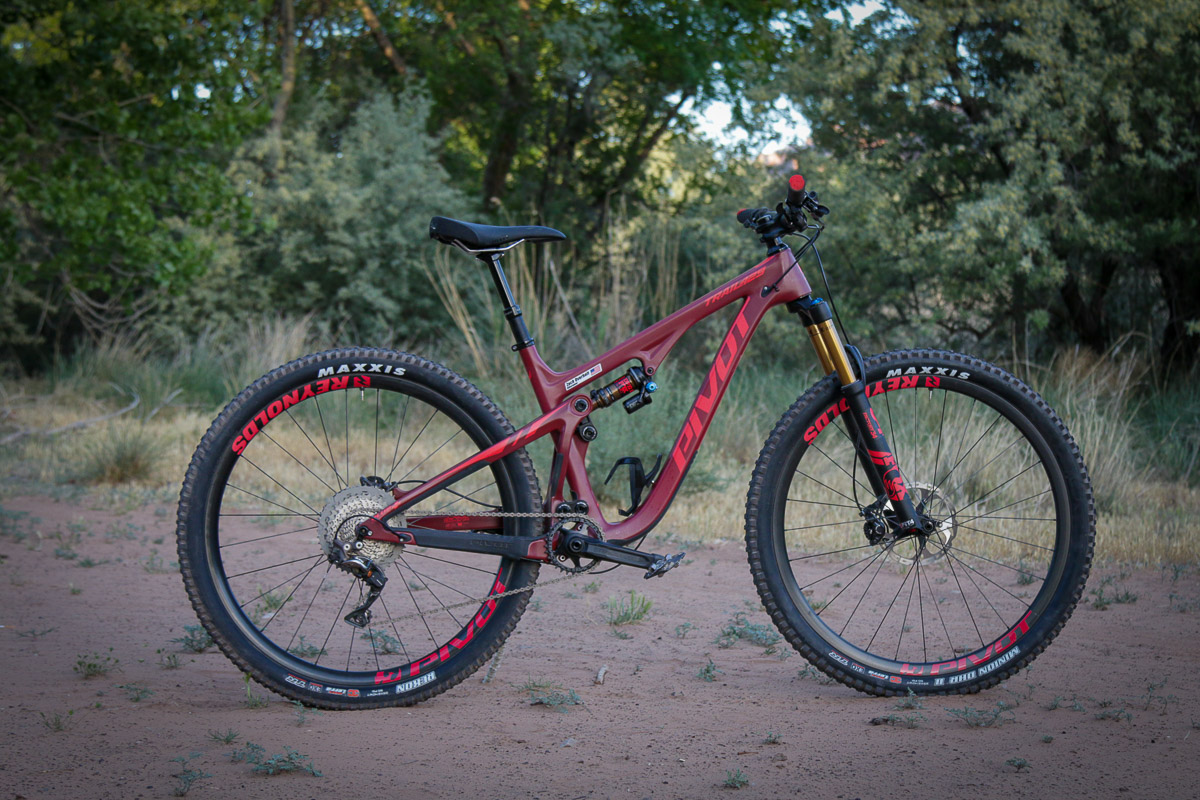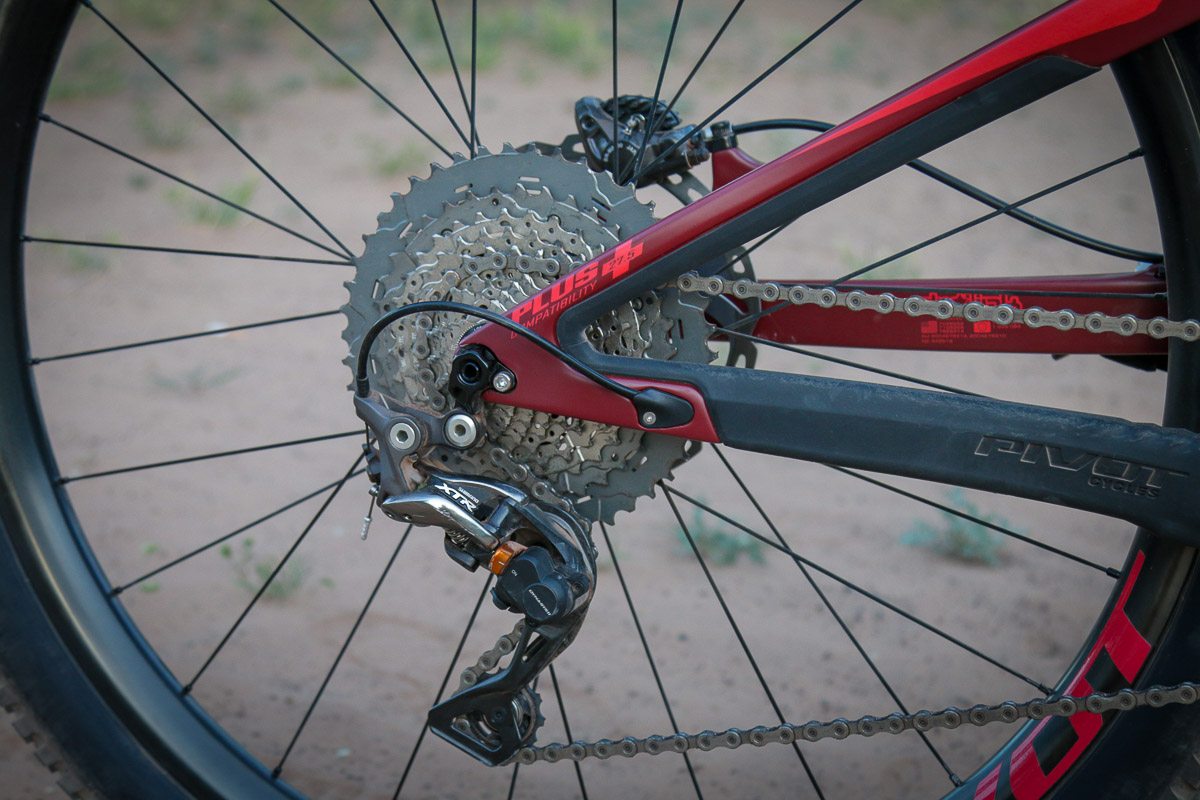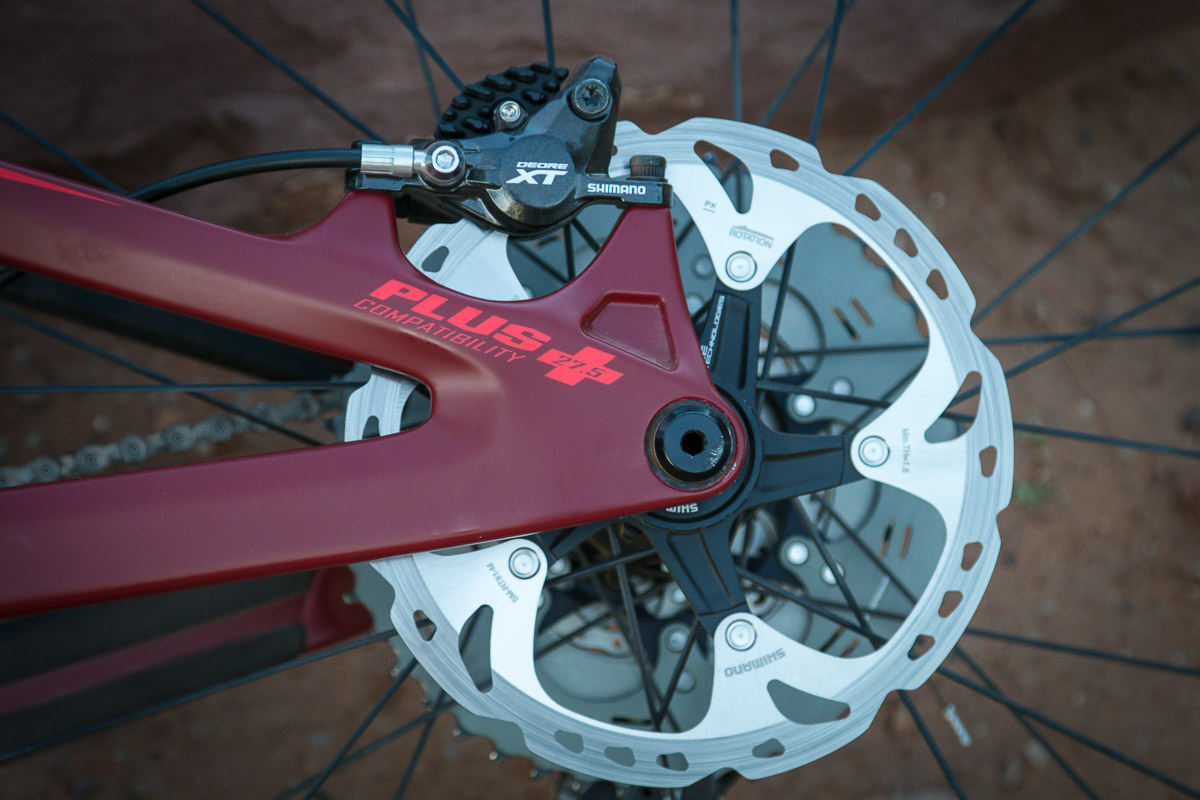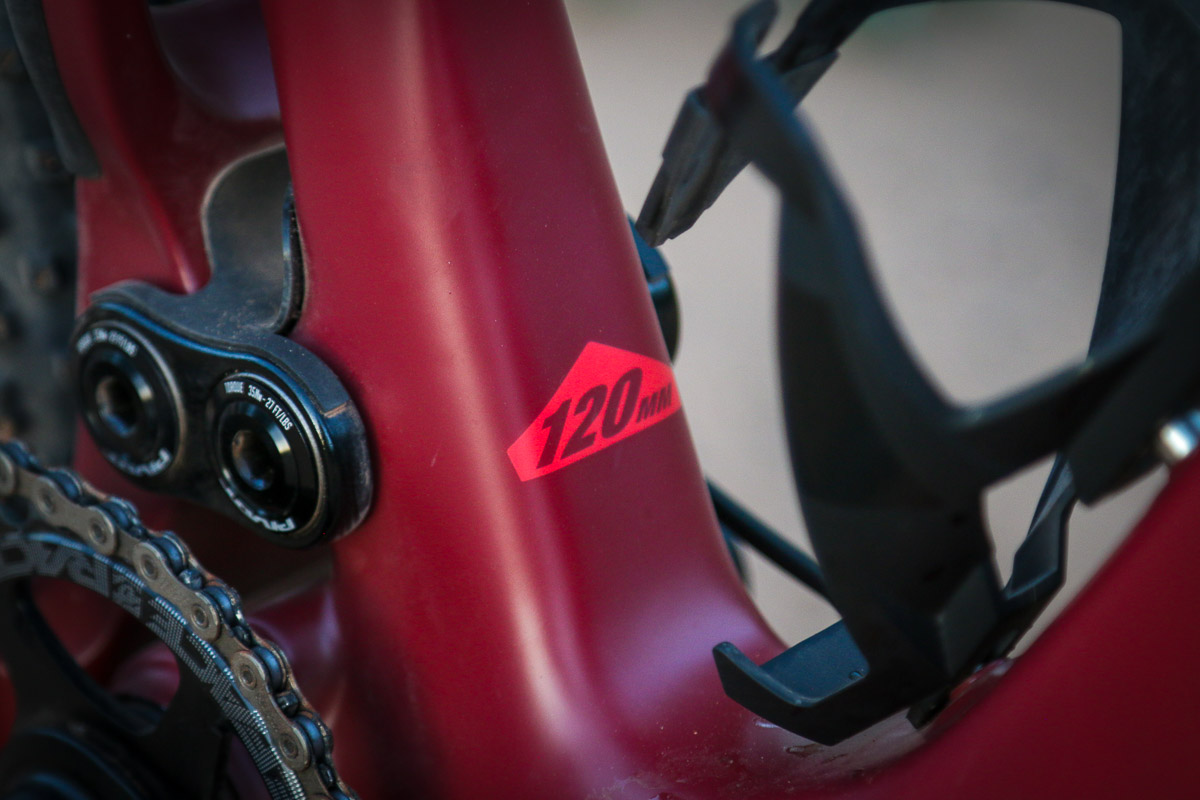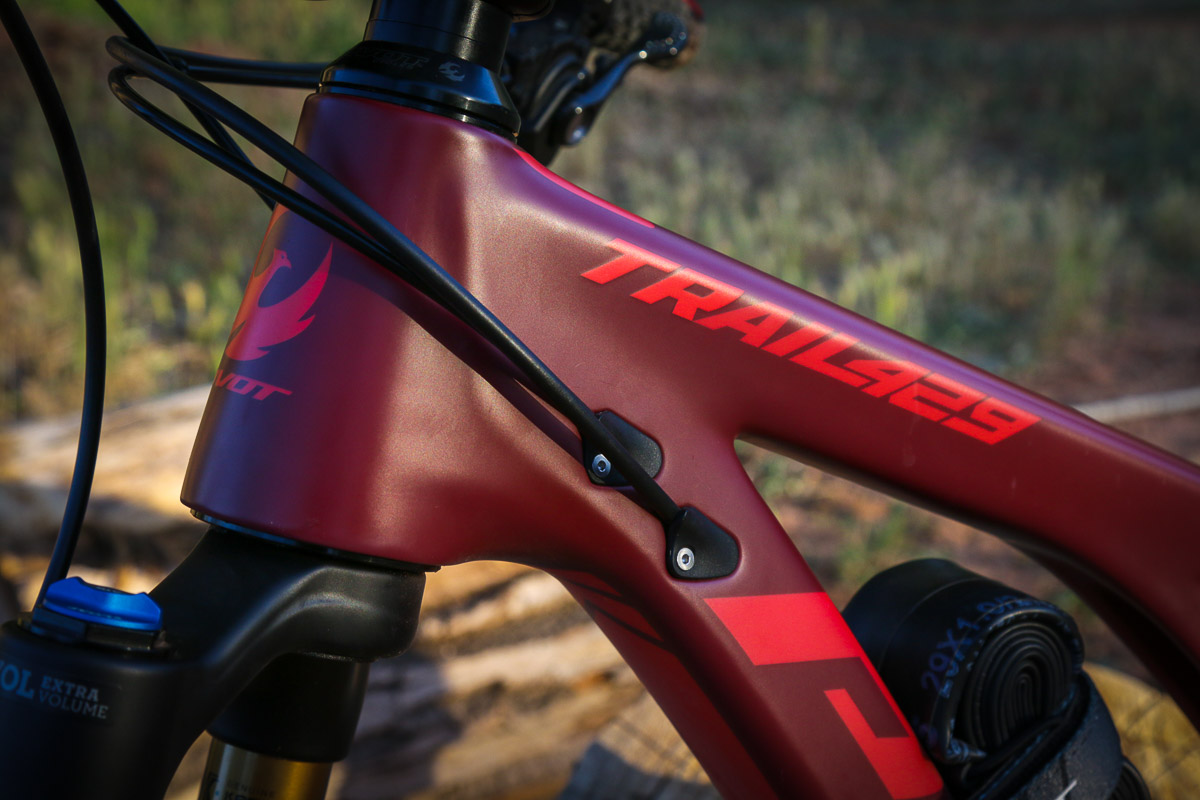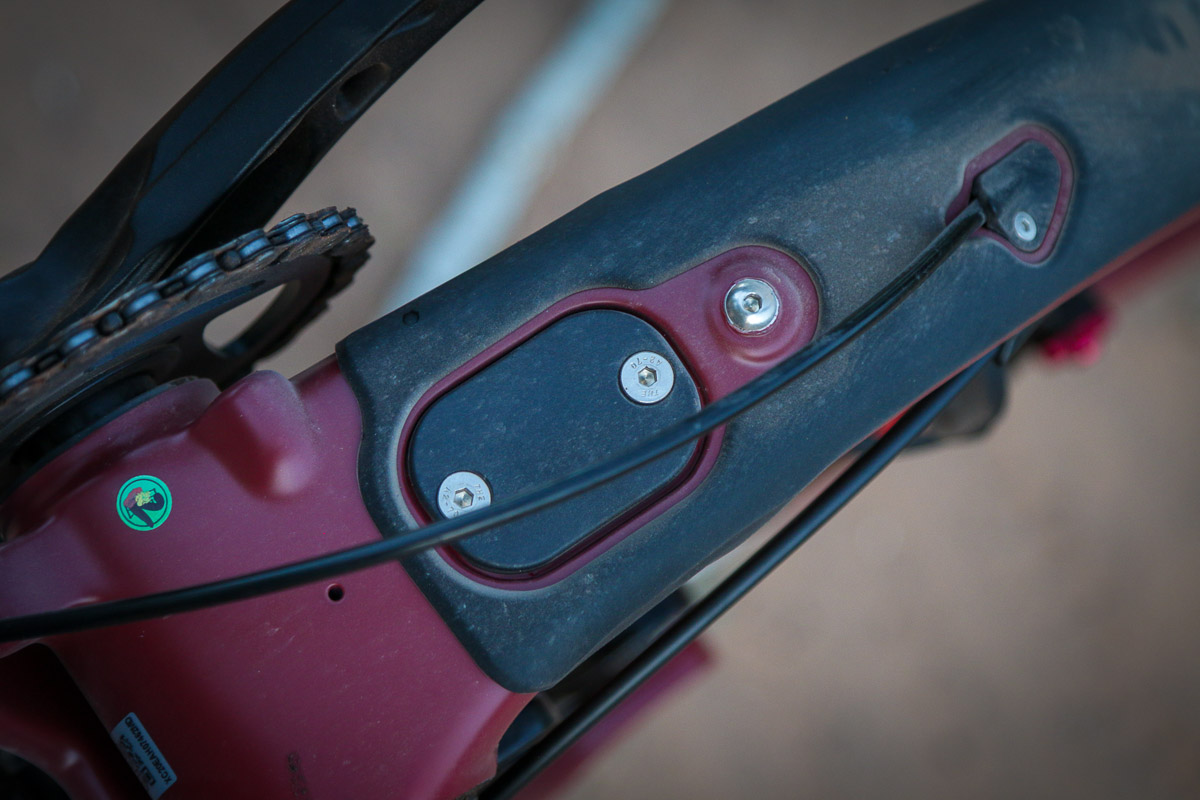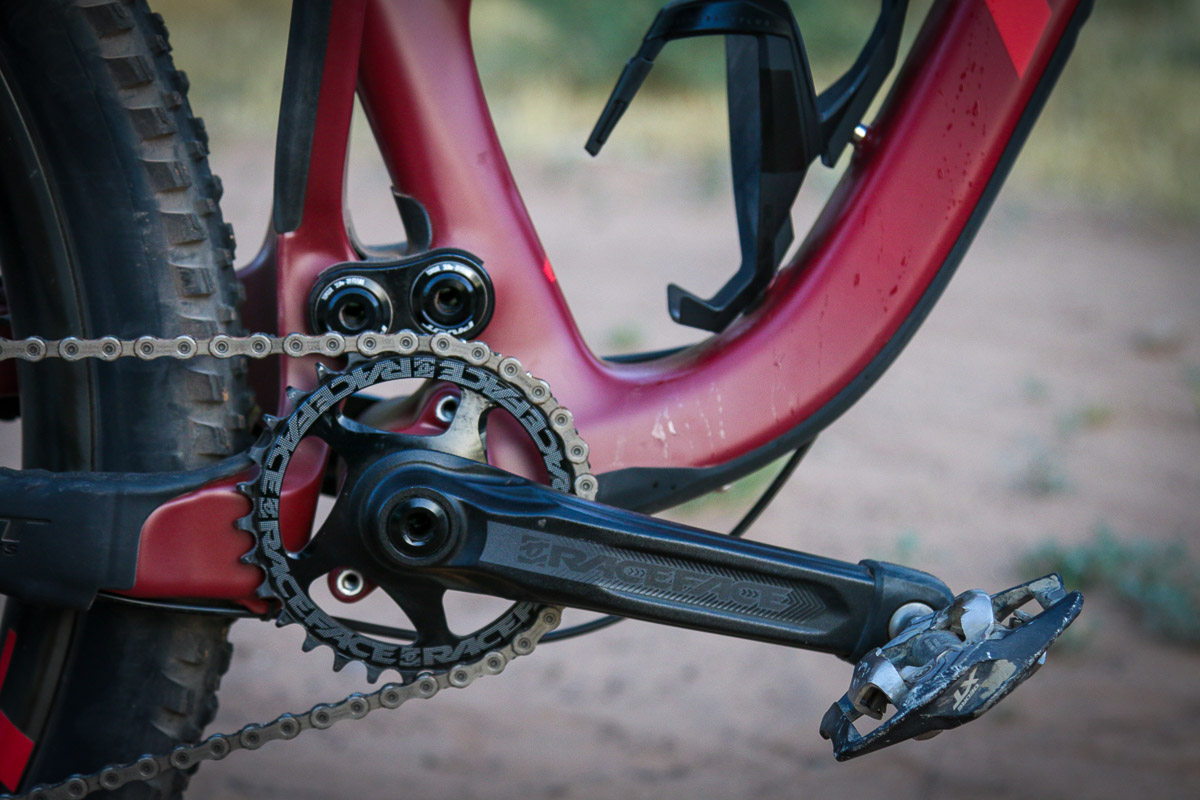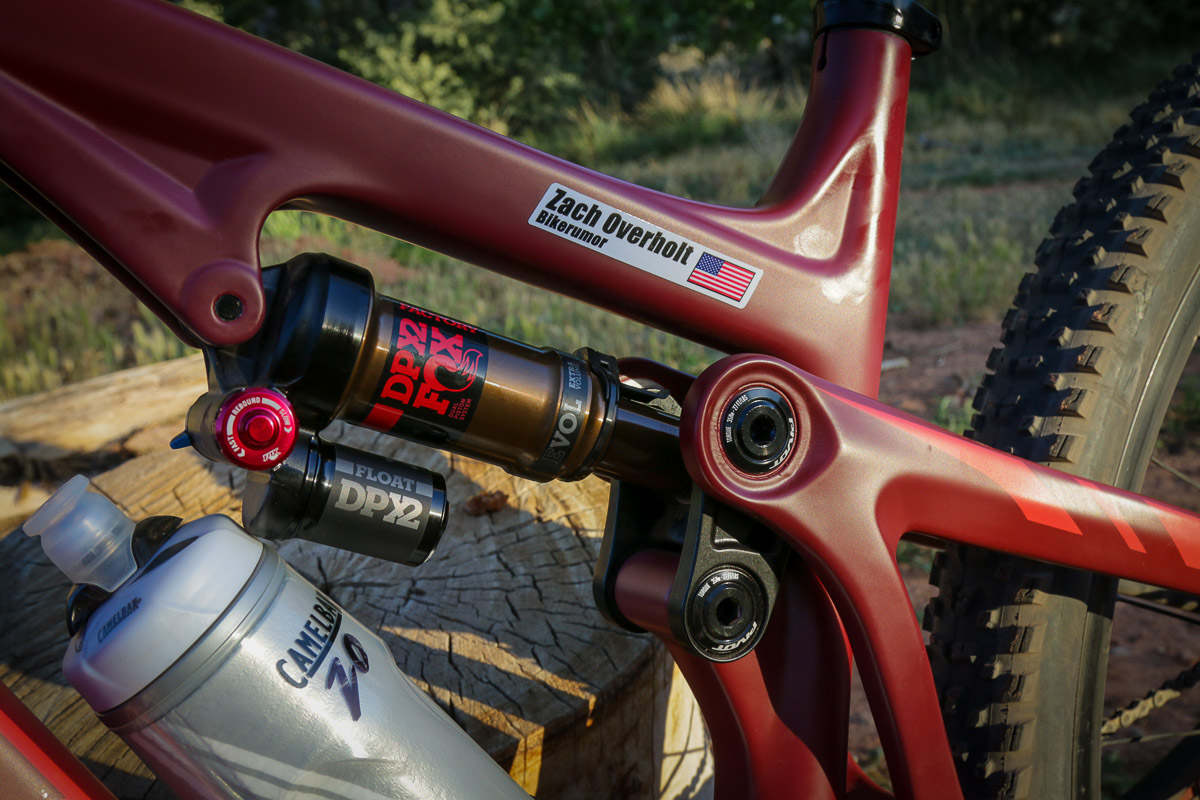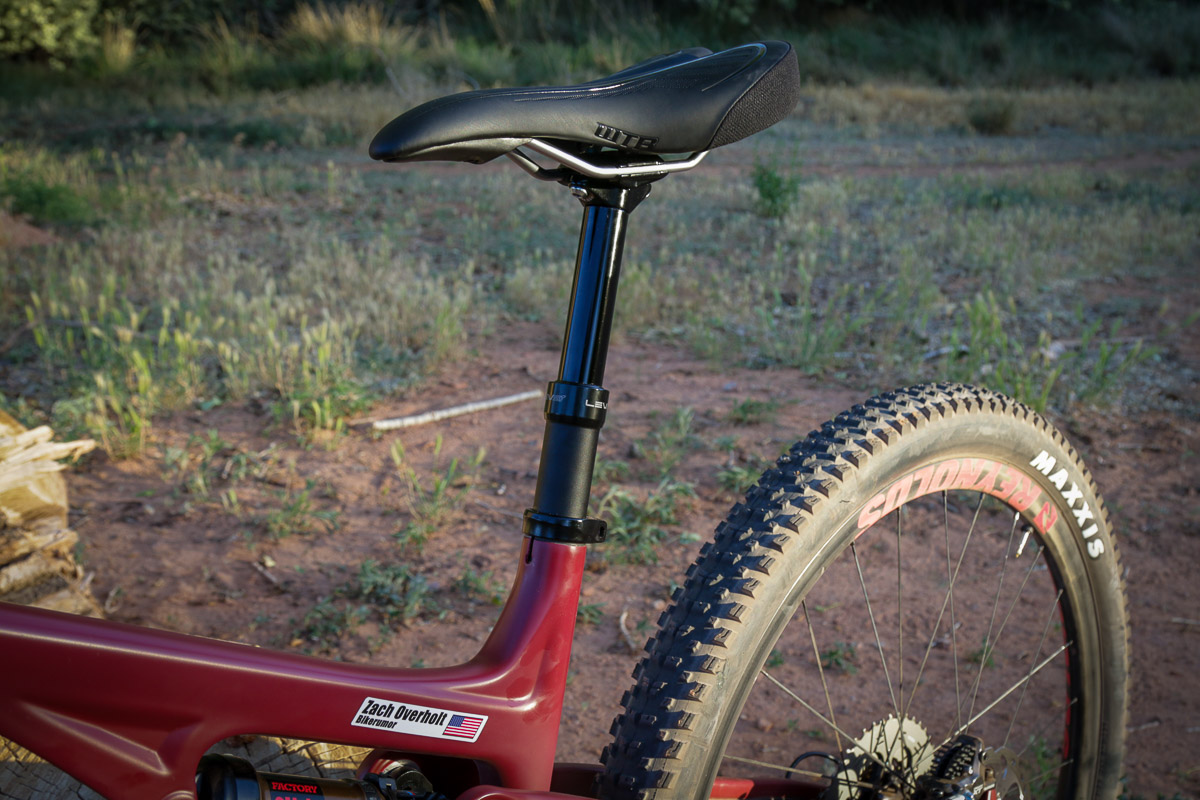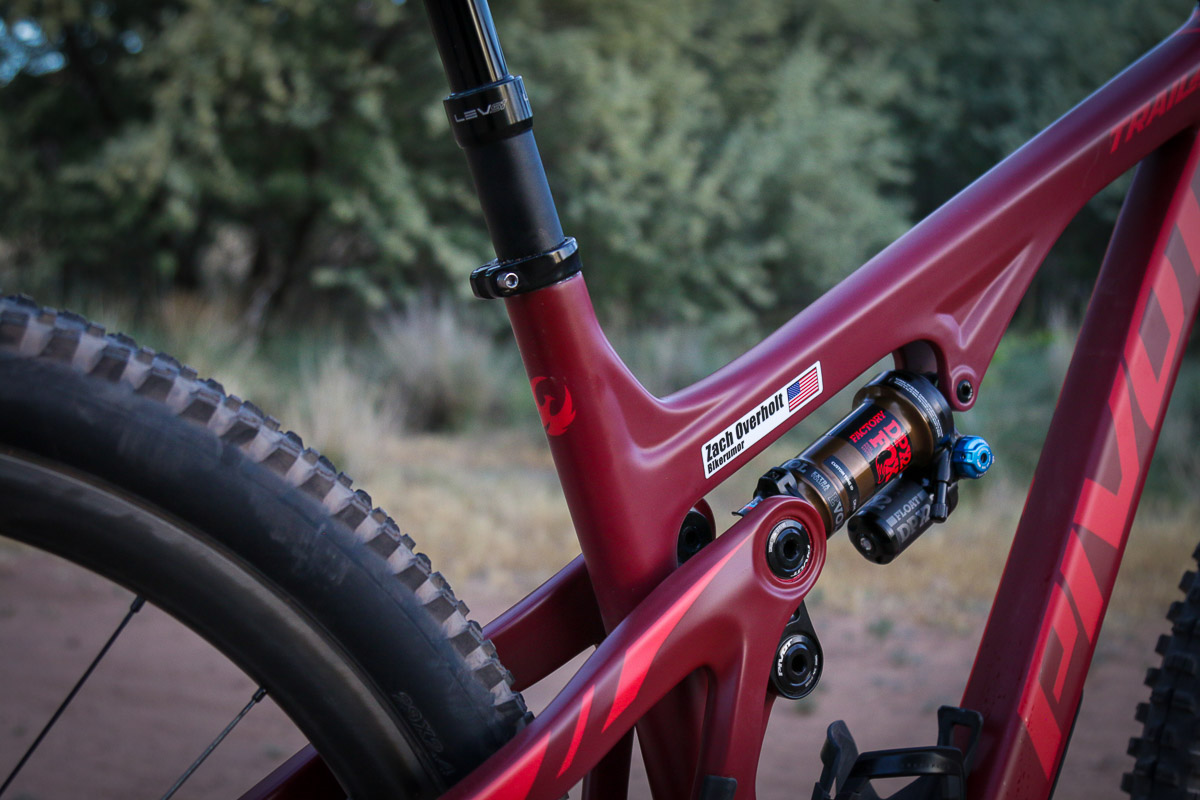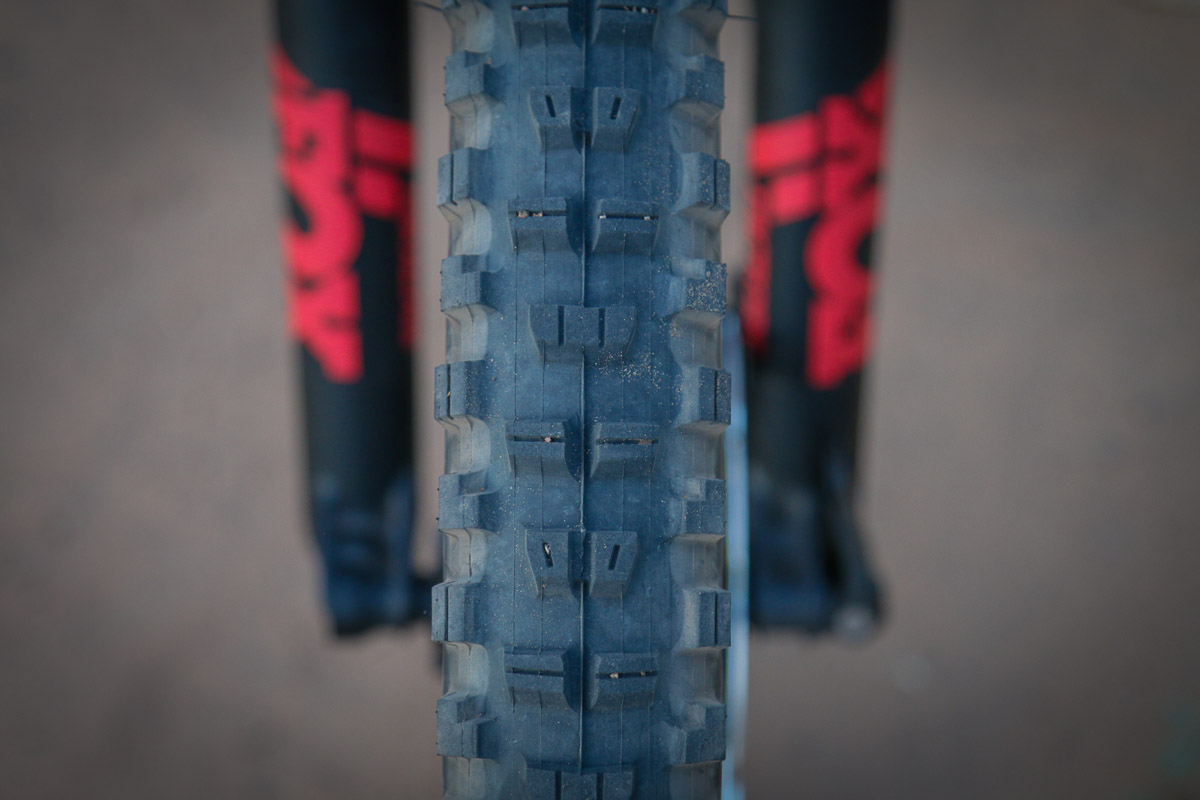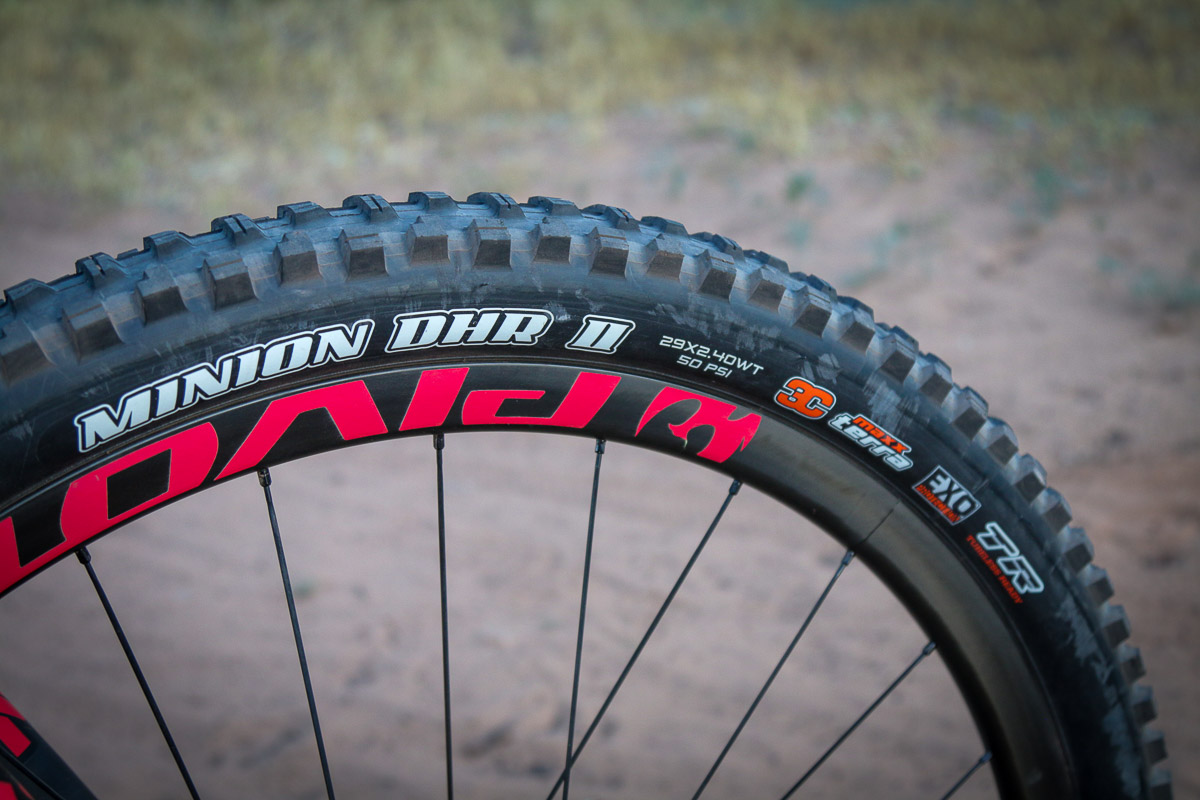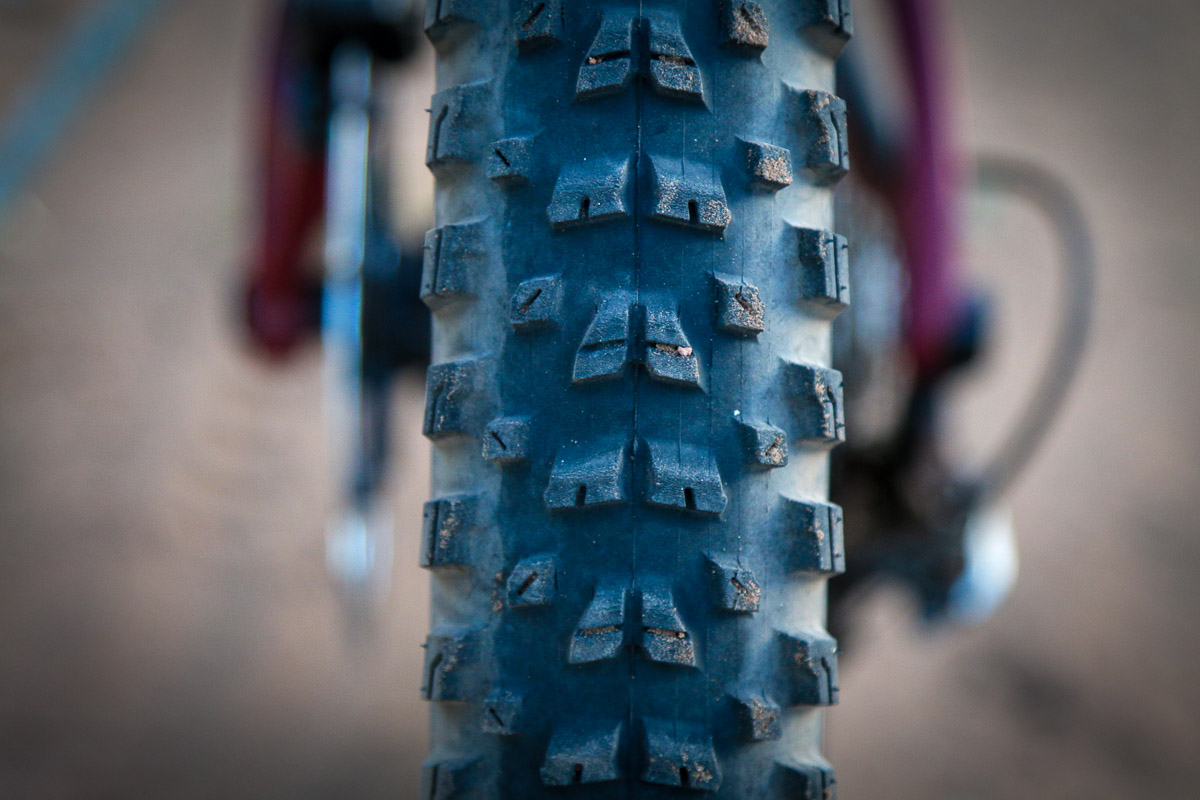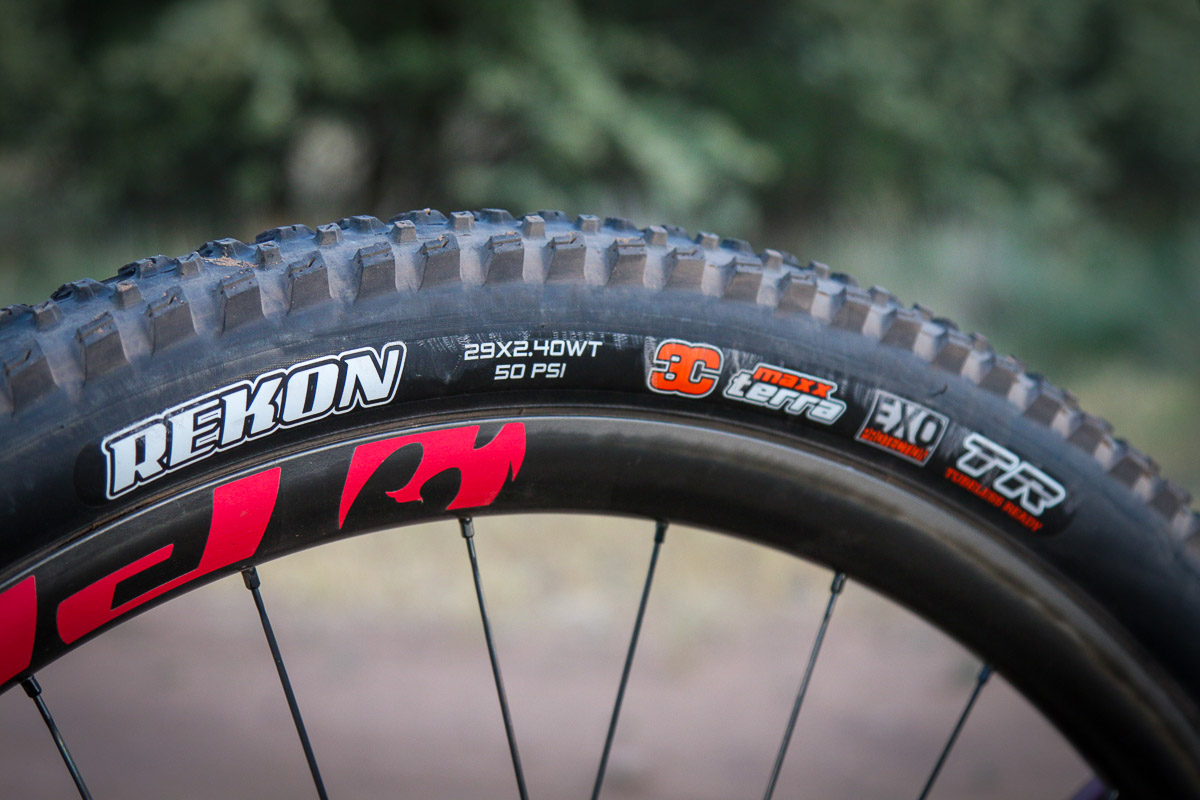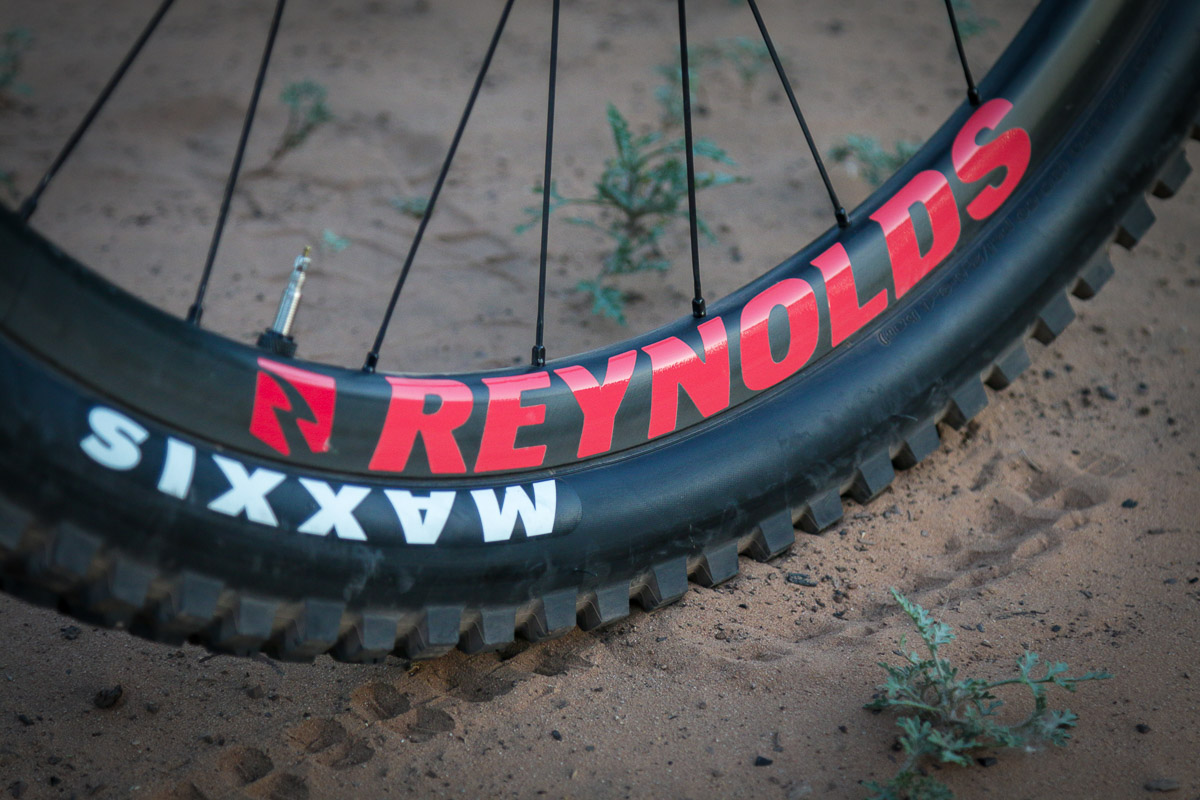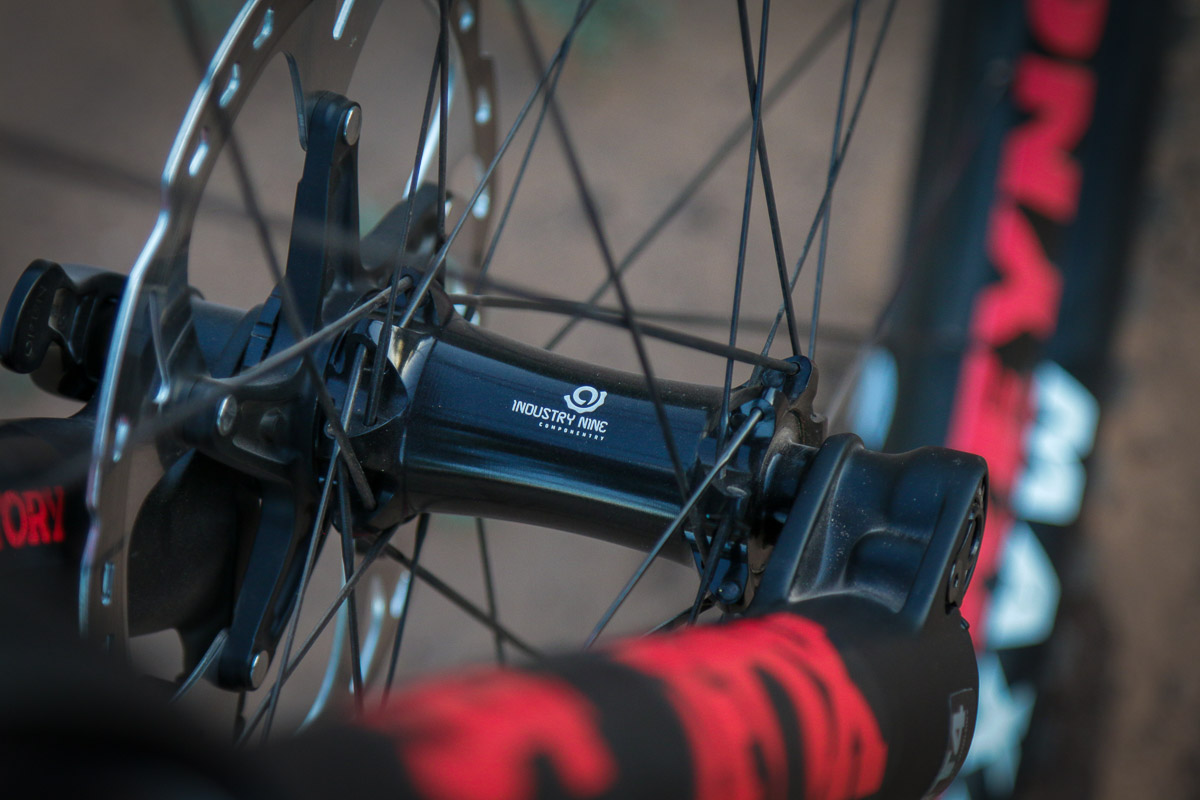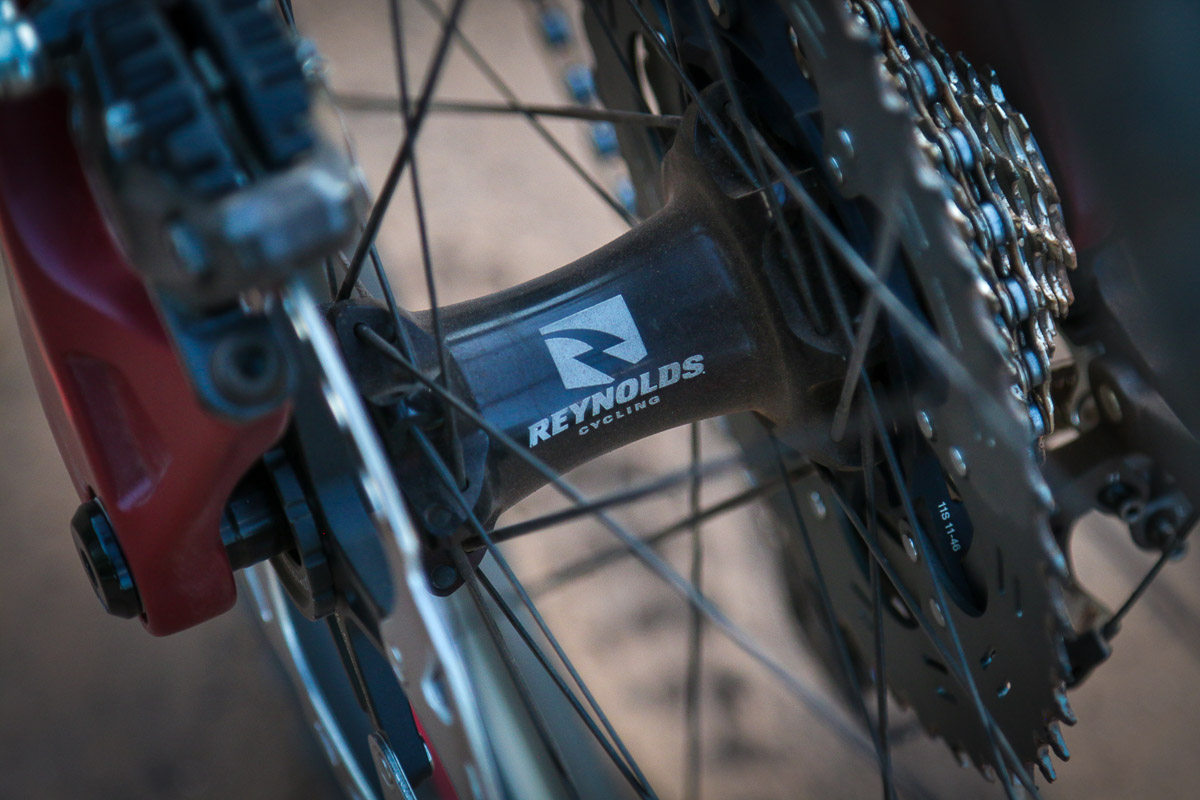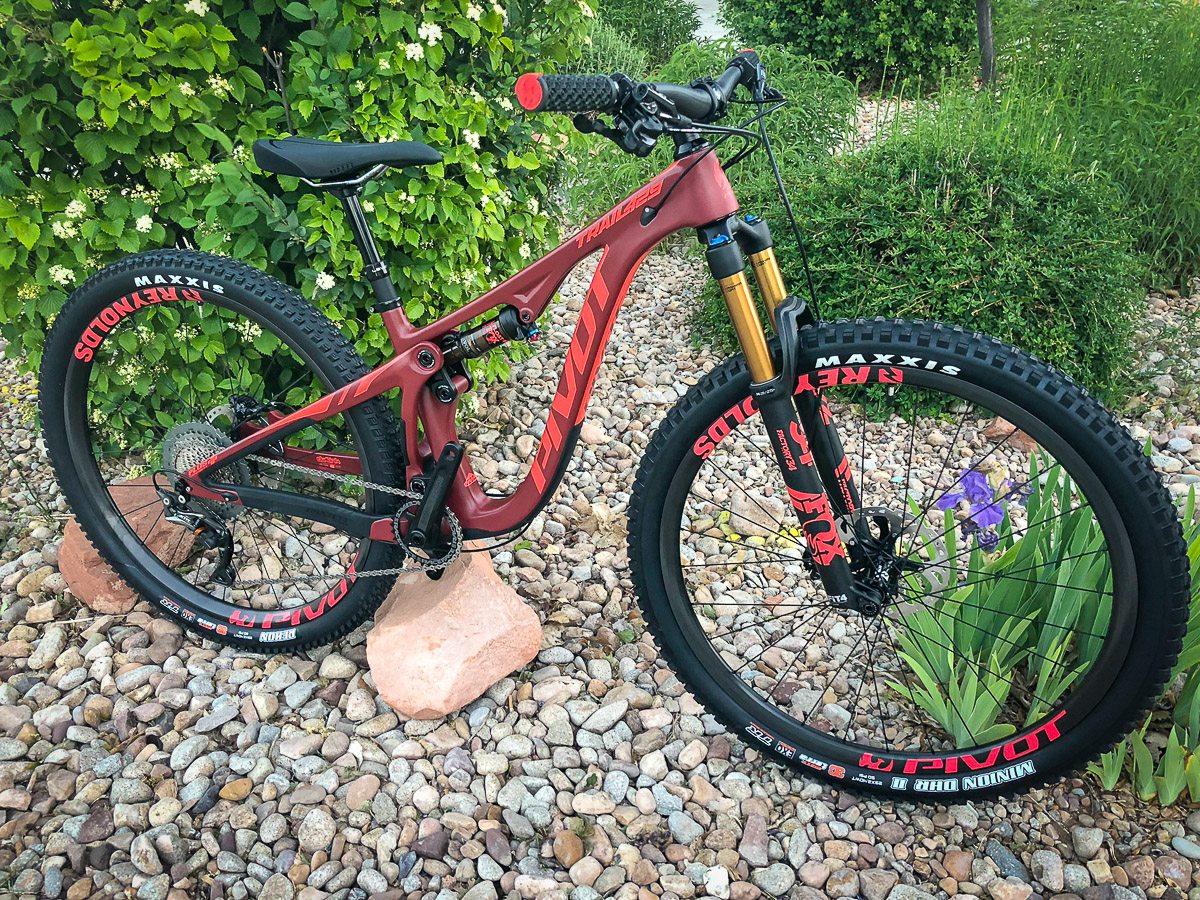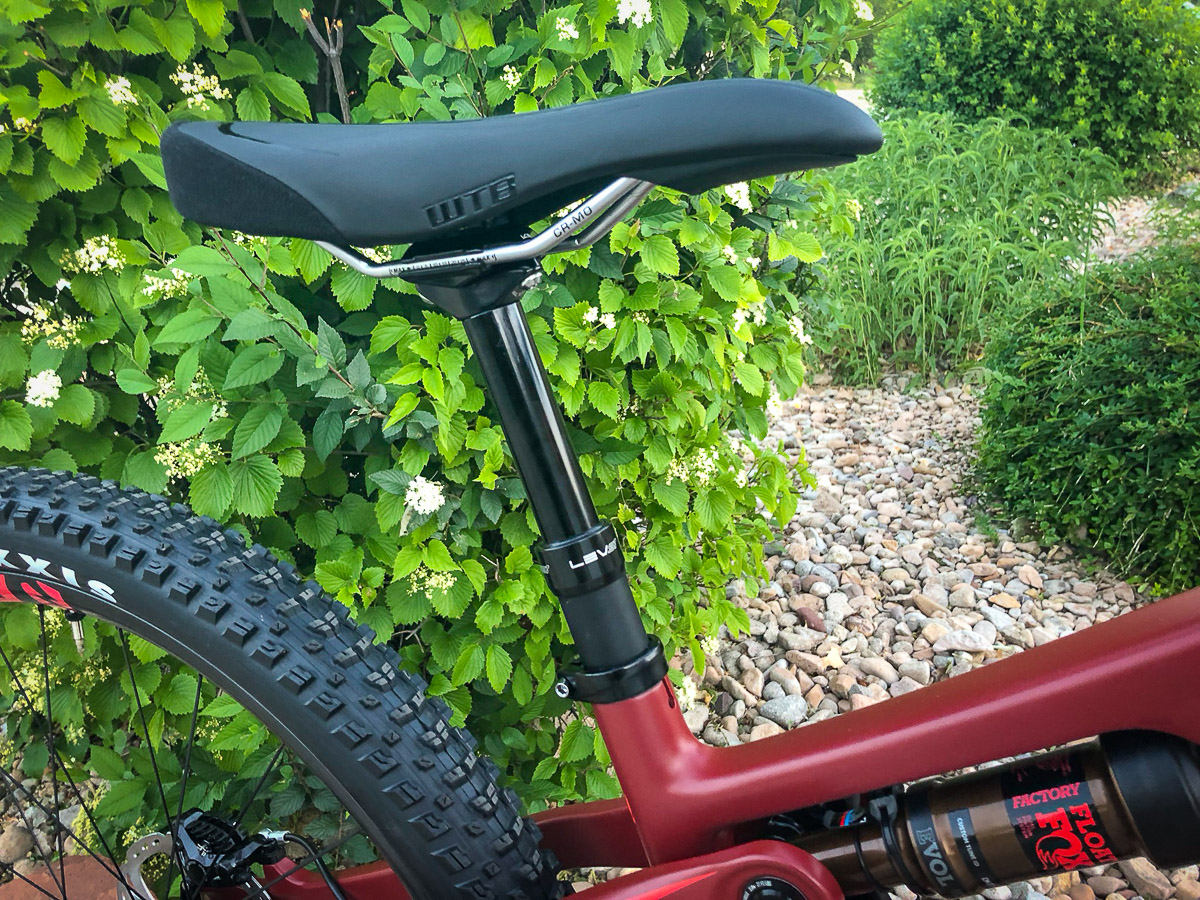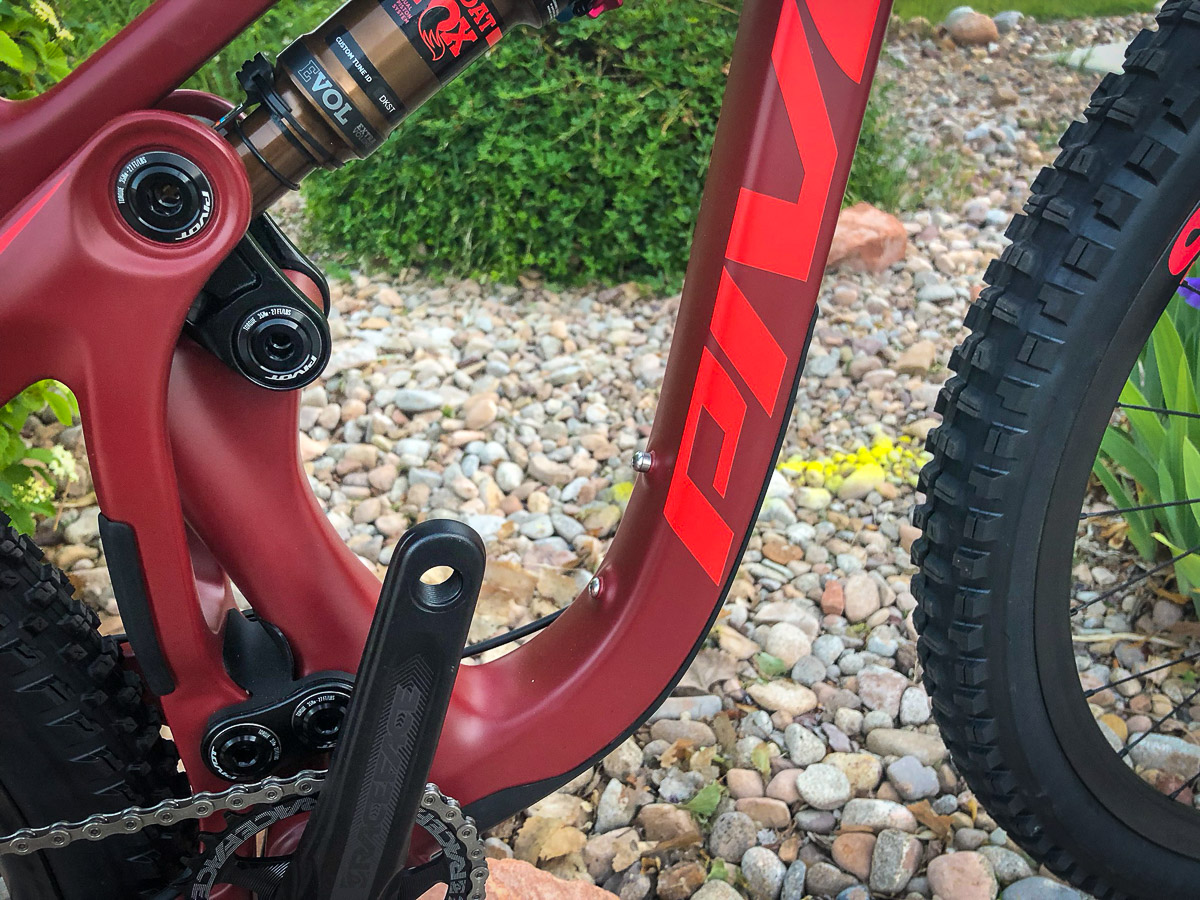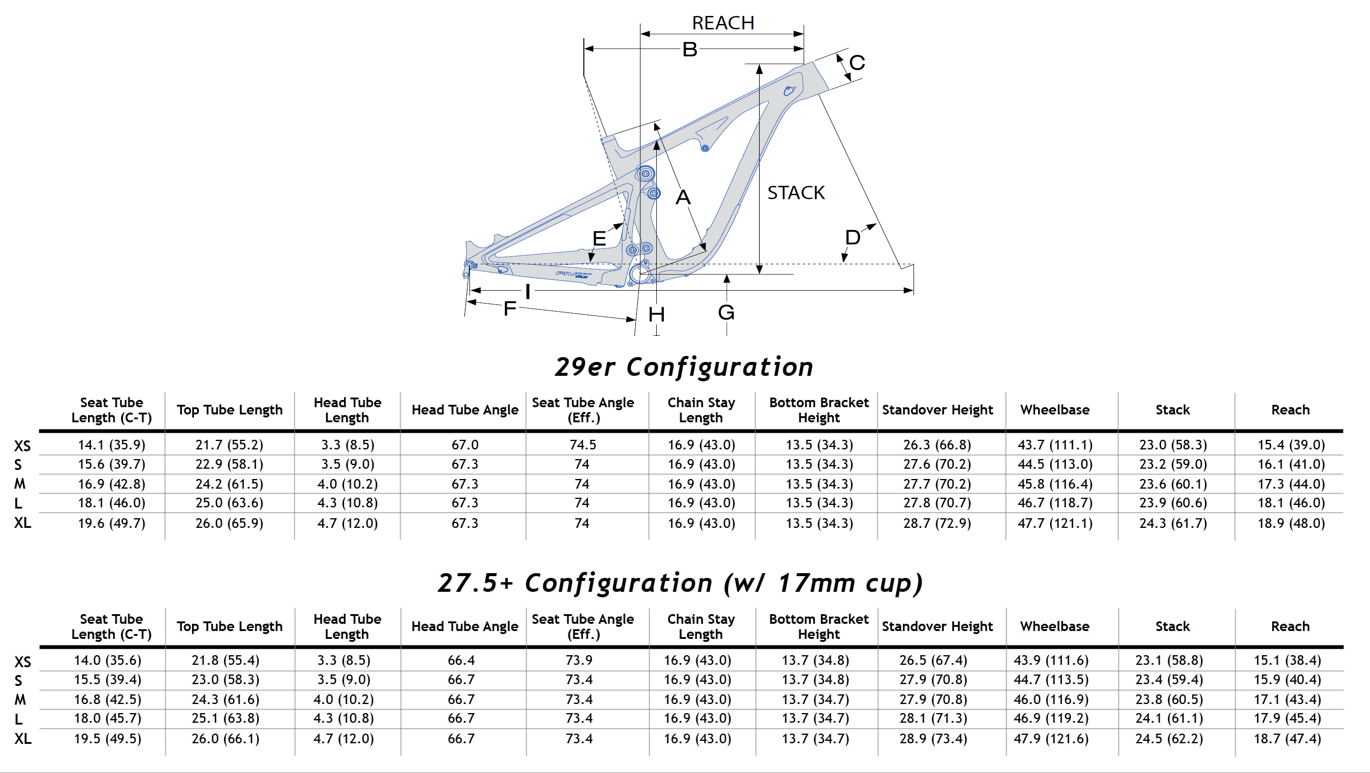If you have to choose just one mountain bike, that choice is getting harder than ever. Fortunately, bikes in almost every category are continually improving their performance and increasing versatility making it easier to find that bike that best suits your needs. When Pivot introduced the Mach 429 Trail, it was that versatility that appealed to many riders. It could be an aggressive 29” XC race bike, a racy 29” trail bike, or even roll on 27.5+. And while Pivot and Pivot’s fans seemed happy with the result, as always, there was still room for improvement. Specifically, Pivot wanted to increase the bike’s trail capabilities without losing the fast, snappy feeling the current bike was known for. That required a fresh take on the existing design which comes not only with a new name, but some big improvements as well.
You’ll notice that even though 429 is still in the name, now Trail comes first. That’s not only to signify that this bike is skewed towards the trail bike segment of the market, but also to help eliminate some confusion within their catalog as well. Due to the similarities between the Mach 429 SL and the Mach 429 Trail, Pivot decided it would be beneficial to change the name to the Trail 429. The Mach 429 SL will still continue in the line up as the racy XC option though.
Yes, it’s Super Boost Plus
According to Pivot, they felt that the current Mach 429 Trail was a nice update to the SL, but felt that the XC snappiness started dissipating once the frame started nearing 120mm of travel. Built with slightly longer chainstays and developed from the XC side-up, Pivot wanted to see if they could get the same snappiness but with a full 120mm of rear travel and 130mm up front
As we saw with the Switchblade, in order to get all the pieces to fit together, Pivot had to think outside the Boost. We’re referring to Super Boost Plus of course. Introduced on the Switchblade, Super Boost Plus uses a 157mm x 12mm rear end that is wider than the current 148mm x 12mm Boost rear ends. Even though the Trail 429 is shorter travel than the Switchblade, Super Boost Plus is still utilized for the same reasons. In addition to allowing for massive tire clearance (29 x 2.6” or 27.5 x 3.0”), it also allows for shorter chainstays with that tire clearance, and stiffer wheels as well. According to the testing that Pivot did with DT Swiss, Super Boost Plus wheels end up about 30% stiffer than Boost wheels. According to Pivot’s President and CEO, Chris Cocalis, this makes the stiffness increase at the rear proportionally the same to the increase at the front from non-boost to Boost. This stiffness increase at the rear also allows for the bike to retain that quick acceleration that riders loved from the first gen, only with more travel.
Based on the number of bikes we’ve seen recently that have also adopted 157mm Super Boost Plus spacing, it looks like the size is starting to catch on meaning we’ll likely see many more bikes in the future with this standard. That should make finding compatible hubs and wheels easier as well. One of the more interesting design features of the Trail 429’s rear end is that in spite of the increased hub width, there’s actually more heel clearance now than on the Mach 429 SL. Sure, it likely took more engineering to get it done, but Pivot was able to seemingly check all the boxes without any downside – other than the fact that your old rear wheels won’t fit this frame without a hub swap. But for now the Trail 429 will only be sold as a complete bike so that shouldn’t be a problem. Really, the only thing Super Boost Plus won’t let you do is run a 200mm rear brake rotor – due to the clearances, 180mm is recommended as the maximum size.
Along with the stiffness gains from the use of Super Boost Plus, Pivot also increased the stiffness of the rear end with some new frame components. Like a few of their bikes now, the Trail 429 moves to the double upright design for the rear swingarm along with a lower DW suspension link that’s nearly 1” wider for supposedly a dramatic increase in stiffness. The upper link is beefed up as well, and mates to a new Metric sized shock. According to Fox, the Metric shock offers more bushing overlap than the previous size and more control over the air spring. Both of those should lead to increased reliability and better performance out of either the Fox DPS or optional Fox DPX2 rear shocks.
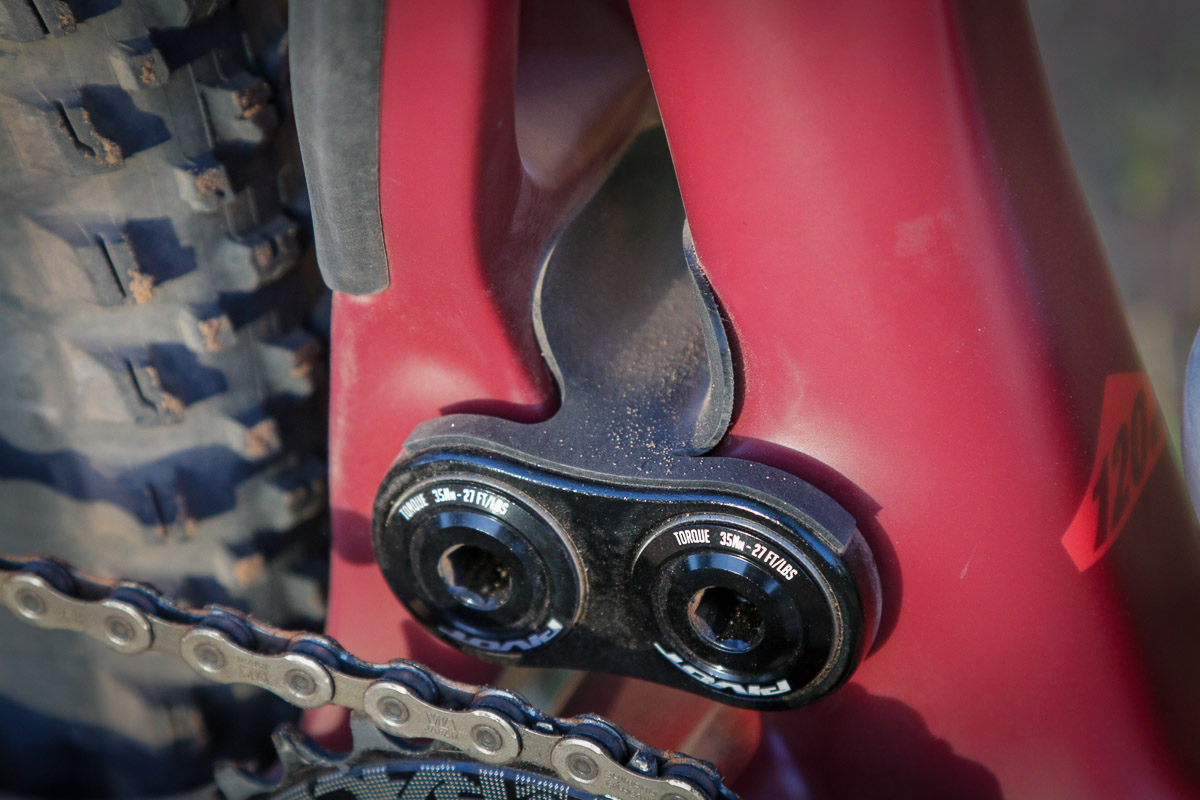
Carbon Only
The new bike will be available in carbon only – for a somewhat surprising reason. Thanks to a number of factors, Pivot says they’ve gotten to the point that aluminum frames can actually cost more to produce than carbon. This has to do with the rising costs of aluminum, increased development times due to longer lead times for hydroformed tubing and other tooling, and Pivot’s own advancements in carbon frame production like post machining which is now done on a custom CNC machine all in one go. That last one not only helped Pivot reach lower price points for carbon, but also helps maintain the precise tolerances that Pivot demands.
Along those same lines, the new frame is able use the Pivot Cable Port System instead of the previous external cable routing. Notable is the fact that other than their Phoenix DH bike, this is the first Pivot frame that is not front derailleur compatible. Cocalis pointed out that as little as two years ago, 46% of the build kits they sold were still 2x. But shortly after, the demand fell off. And with 1x drivetrains improving every year, he no longer felt it to be a necessary feature. As a result, the frame is built with a new kinematic design that is designed around 1x drivetrains and is recommended for use with 30-34t chainrings. Even though the frame still has the battery port on the bottom for internal Di2 batteries, there is not an opening for the wire to pass from the seat tube to the chainstay. Pivot points out that technically running Di2 would still be possible, but you’d have to get creative with the wiring.
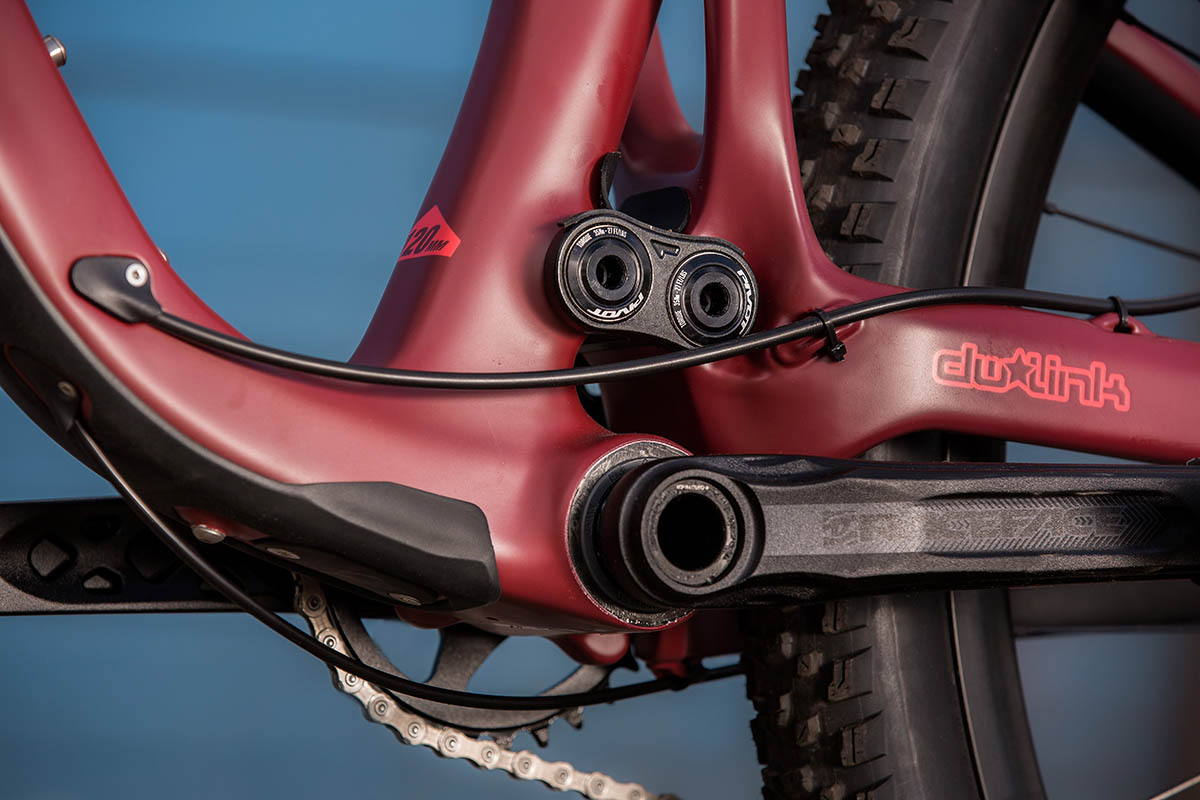
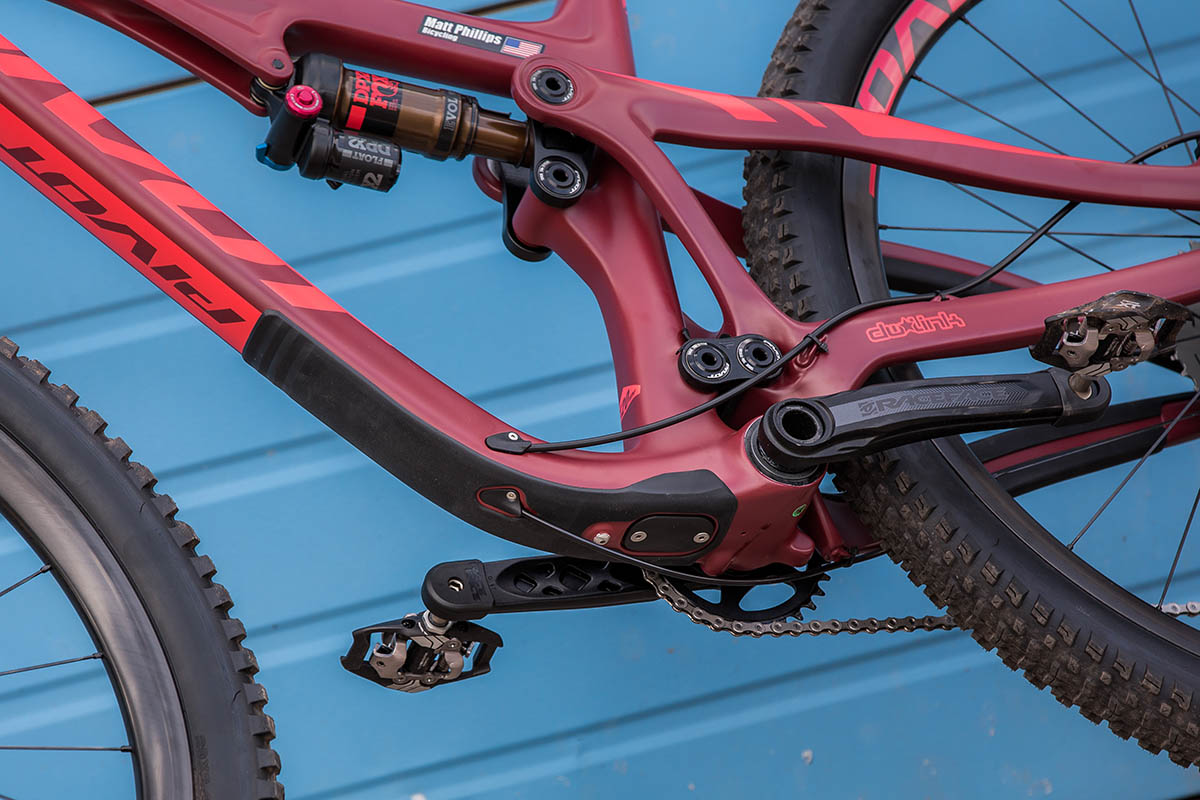
Below, you’ll still find a PF92 bottom bracket, which is something Cocalis still feels very strongly about.
In his own words, “bonding an aluminum shell into a carbon frame so you can thread an aluminum cup into it, that you then press bearings into, is kind of ridiculous. Creaking bottom brackets have never been an issue for us, but that’s due to the level of precision we require from our factory.”
Cocalis maintains the fact that the PF design allows for a lighter and stronger carbon frame and they’ve even shared the tolerances with other companies and factories to try and help improve the reputation of press fit.
While any frame running a crank with a 24mm spindle gets the standard Shimano PF92 bottom bracket, Pivot uses a custom bottom bracket for cranks with 30mm spindles. Made for Pivot by Enduro Bearings, the bottom brackets use double row sealed cartridge bearings with better grease, rust proof black oxide coating, and hardened bearing races for durability.
While we’re on the subject of bottom brackets and crank sets, due to the Super Boost Plus spacing, the frames do require slightly different spec. While the chainstays will easily clear a 168mm q-factor crank, the chainline needs to be adjusted to accommodate the increased width at the rear end. That means SRAM cranks currently will need the included adapter from OneUp that bumps the chain line out to 56.5mm. On the Race Face cranks, you can simply flip the chainring and accomplish the same thing. And if you want to run a chain guide, that’s no problem either with the ISCG-05 mounting tabs.
The new frame retains the ability to run a water bottle cage – on every frame size. Moreover, the cage mount is positioned so that I was able to run a 25oz Camelbak Podium insulated bottle (or the 21oz Camelbak Ice insulated bottle shown here), even with the Float DPX2 rear shock. It was a bit of a tight fit, but it was still possible to get the bottle in and out which is impressive since those two bottles are among the largest in terms of physical size.
In other good news for shorter people, Pivot made sure that their seat tubes were deeper and that the seat post collars were lower to allow for longer travel dropper posts. You’ll still find shorter travel droppers on the smaller frames (100mm for the XS, 125mm for the SM), but medium and above all run 150mm length posts. The smaller frames will also run KS LEV Integra droppers instead of the Fox Transfer posts due to their shorter overall length. With a 690mm saddle to BB measurement, I was able to run a 150mm travel post on a medium with room to spare (shown above with a 125mm post installed).
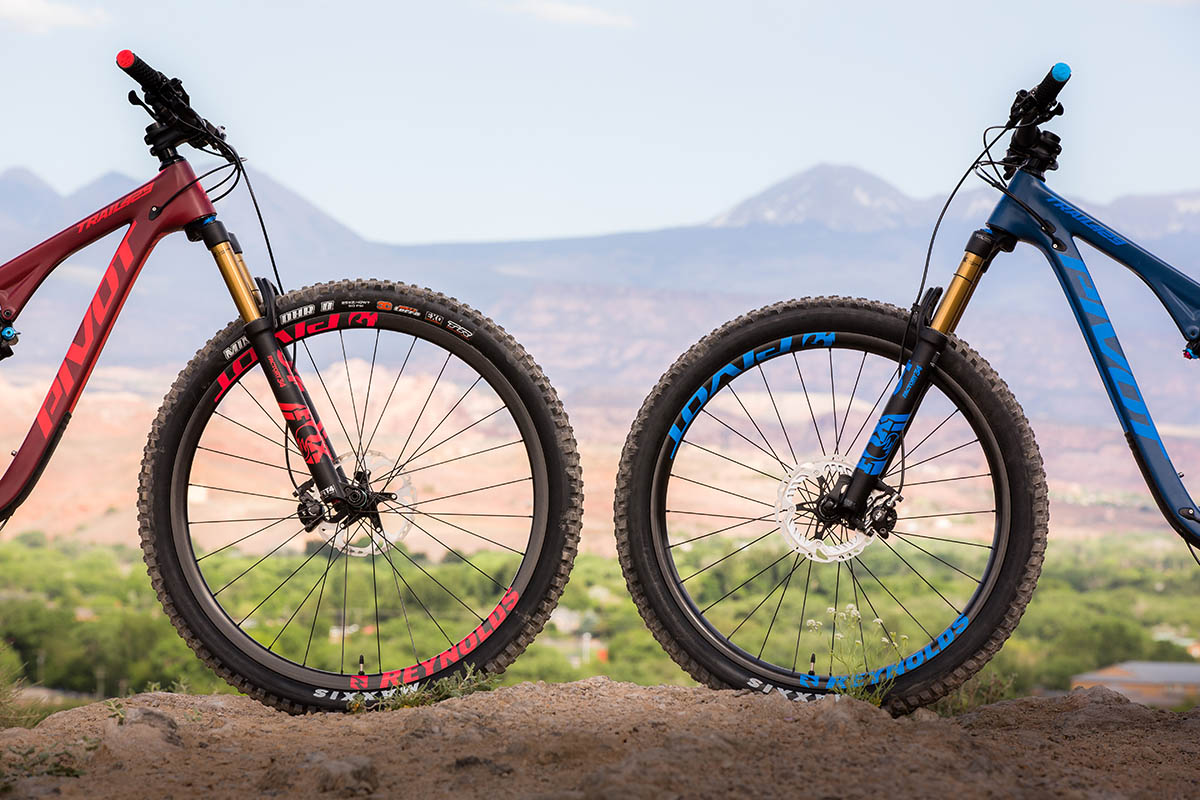
29″ or 27.5+
Going back to that versatility thing, the Trail 429 is fully compatible with 27.5+. In order to keep the geometry consistent, the bikes include a 17mm lower head set cup that comes installed on the 27.5+ builds, and in the box on the 29″ builds. While the frame has clearance for 29 x 2.6″ or 27.5 x 3.0″ rubber, stock bikes will run slightly smaller tires. The 29ers will use 29 x 2.4″ Maxxis tires with a Minion DHR II up front and a brand new Rekon in a 2.4″ width in the rear. The 27.5+ builds will use 27.5 x 2.8″ Maxxis Rekon tires with Silkshield protection front and rear.
Given the current limitations to Super Boost Plus wheelsets and hubs, the builds feature either Reynolds Blacklabel Enduro wheels with Industry Nine Boost/Super Boost Plus hubs, or DT Swiss M1700 40mm and Sun Ringle Duroc 29 30mm wheels for the aluminum options depending on the build. While there aren’t a ton of options just yet, Pivot says that they have the bases covered and more options may be on the way.
Geometry
Along with the new bike comes the addition of a new frame size for the Trail 429 in the XS. In spite of running the big wheels, Pivot was able to get the standover height somewhere between the XS and S Mach 4 which holds the title of the lowest standover height in the Pivot catalog. Impressively, the frame retains the ability to run a 100mm dropper as speced, and a decent sized water bottle in the front triangle.
Across the board, the Trail 429 has what Pivot considers to be a modern trail bike geometry with identical reach numbers as the Switchblade and Mach 5.5. Details include a 67.3º head tube angle, 74º seat tube angle, and 429mm chain stays. In addition, the 17mm lower headset cup makes the bike 1/2º slacker and slightly raises the bottom bracket height to accommodate 27.5+ wheels and tires. Like other Pivots with the same headset cup option, you can also just run the cup with 29″ wheels if you’d prefer a slightly slacker ride, and you can run up to a 140mm travel fork (130mm is stock on all builds).
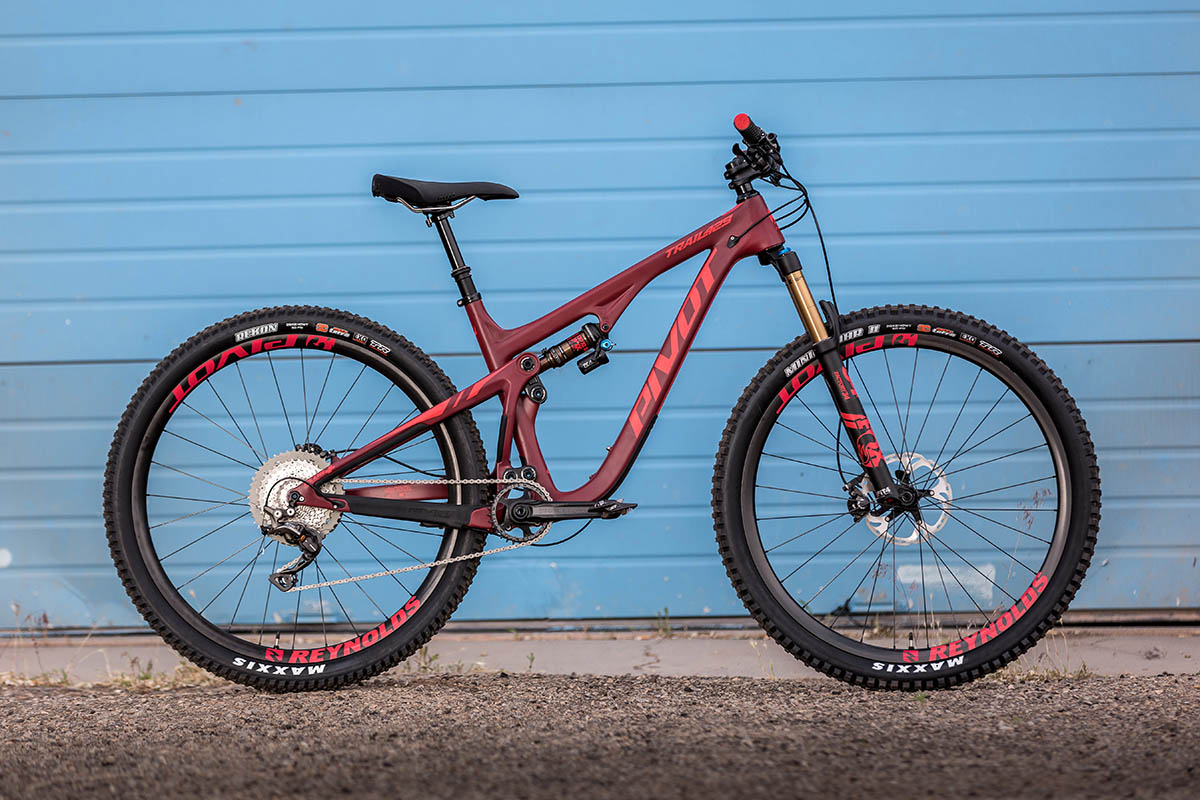
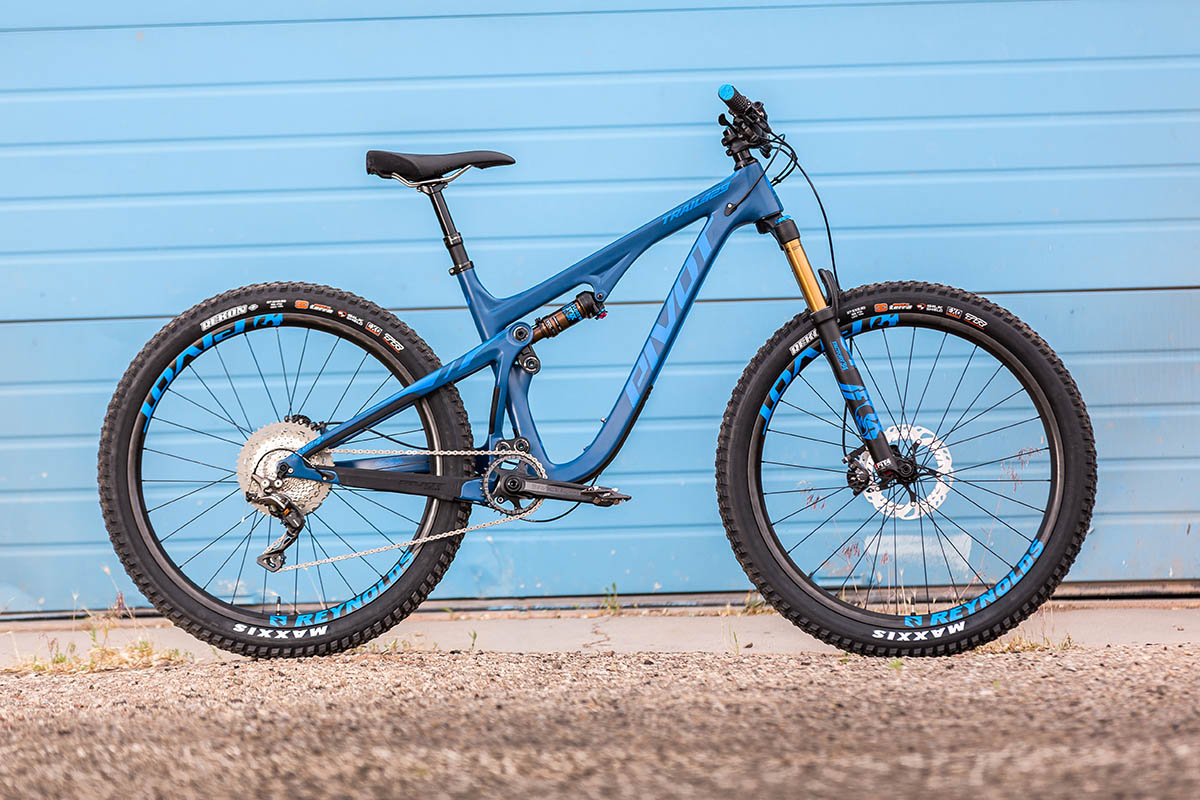
Pricing
- TEAM XTR 1X 29” or 27.5”+ $7,799.00
- TEAM EAGLE XX1 29” or 27.5”+ $8,699.00
- PRO EAGLE XO1 w/ Reynolds Carbon upgrade 29”or 27.5”+ $8,099.00
- PRO EAGLE XO1 29”or 27.5”+ $6,799.00
- PRO XT/XTR 1X w/ Reynolds Carbon upgrade 29” or 27.5”+ $6,999.00
- PRO XT/XTR 1X 29” or 27.5”+ $5,699.00
- RACE XO1 29” or 27.5” $5,199.00
- RACE XT 1X 29” or 27.5”+ $4,699.00
As usual, the Trail 429 will be offered in a number of different configurations starting with Steel Blue or Crimson. From there you’ll have the choice of 29″ or 27.5+ builds, and each of those will be available in Team, Pro, or Race builds, in either Shimano or SRAM configurations. That gives the Trail 429 a retail price starting at $4,699 for the Race XT 1x build, up to the top end Team Eagle XX1 at $8,699. The bikes are available now – stay tuned for our first ride impressions up next!
